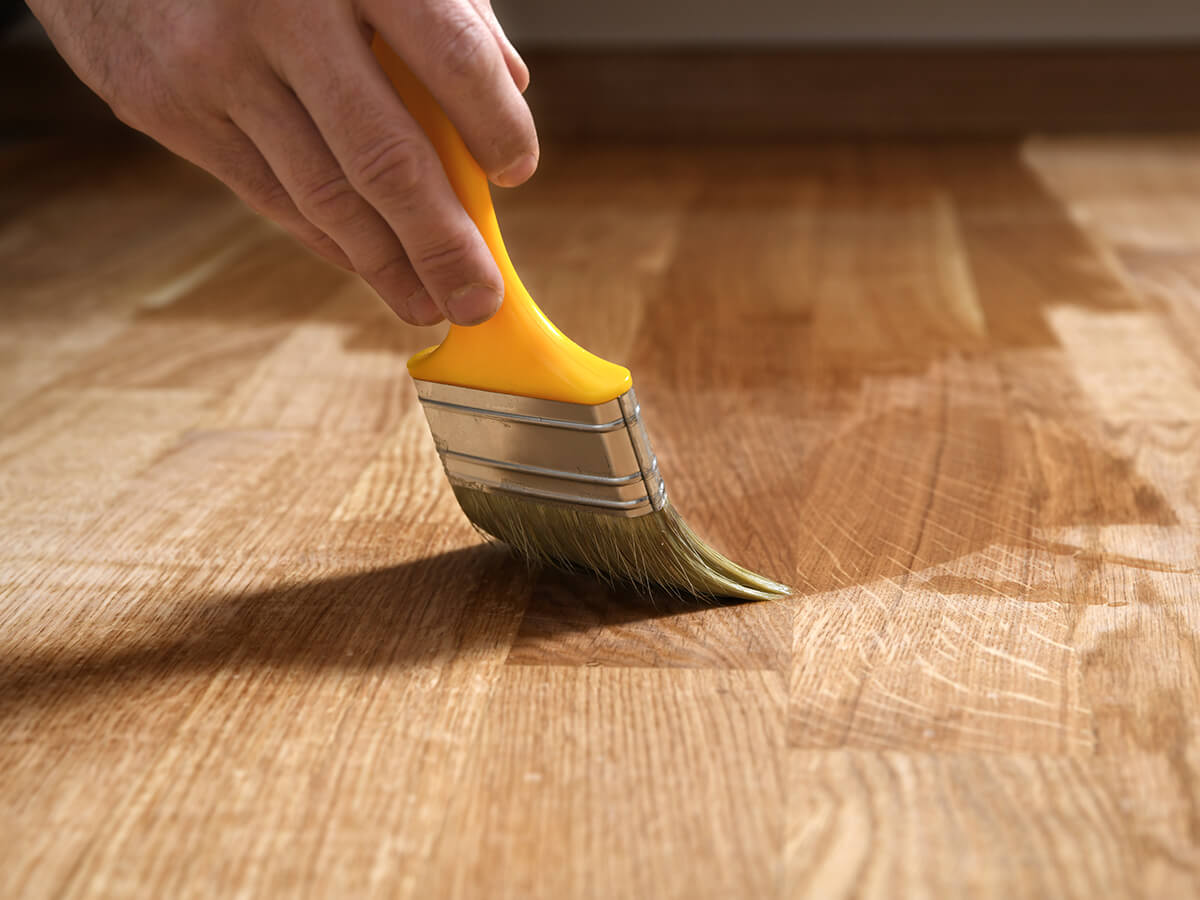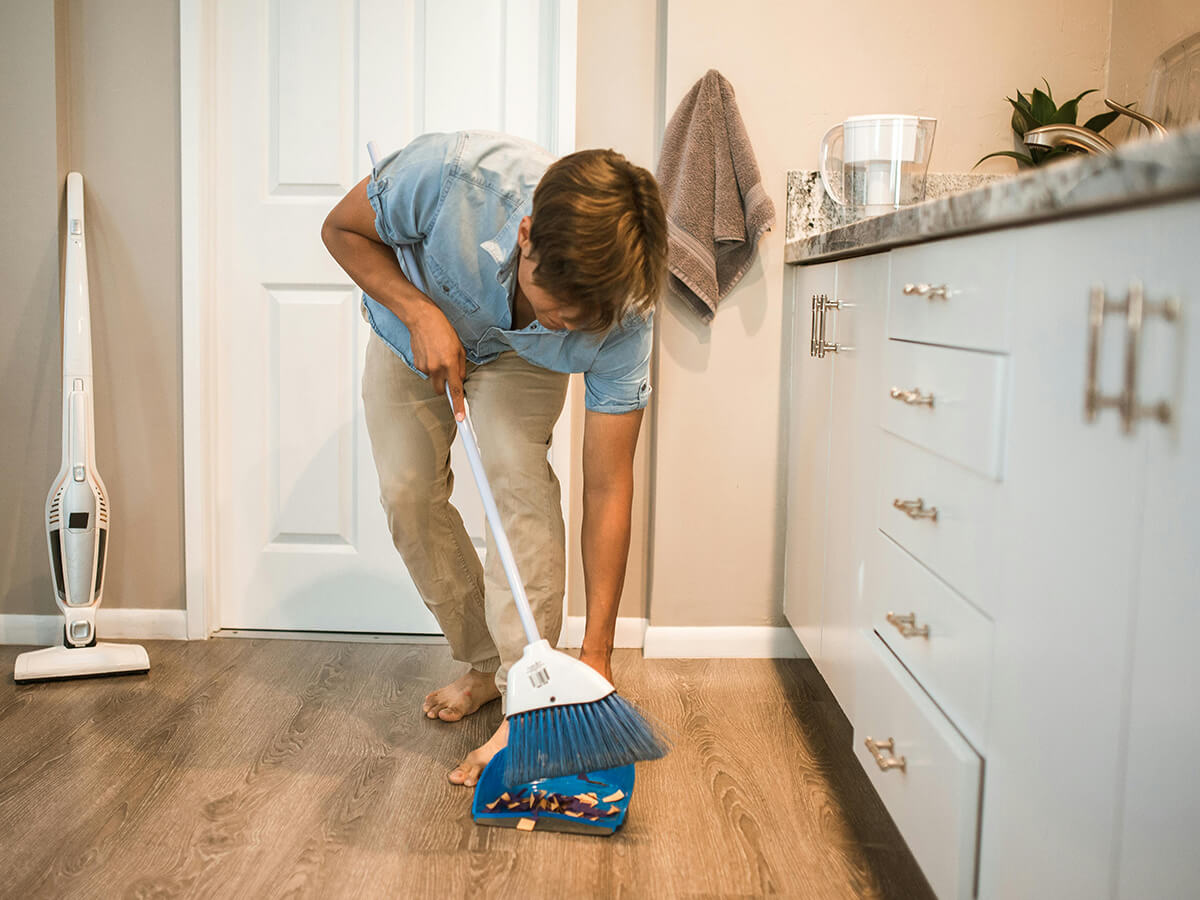The timeless beauty and inherent warmth of hardwood flooring make it an enduring favourite in Canadian homes. However, in busy households, especially those with children or pets, the durability of the finish is just as crucial as the aesthetic appeal of the wood itself.
High-traffic areas, such as hallways, living rooms, and kitchens, demand a finish that can withstand the daily onslaught of footsteps, spills, and potential scratches without losing its lustre. Choosing the right finish is the key to preserving the beauty and extending the life of your hardwood investment. Learn the best options available, focusing on their performance in demanding environments.
Understanding the Demands of High-Traffic Zones
Before examining specific finishes, it’s important to understand the types of wear and tear that high-traffic hardwood flooring endures:
- Abrasion: The constant rubbing of shoes, pet claws, and even fine dust particles acts like sandpaper, gradually dulling the finish over time.
- Impact: Dropped objects, heavy furniture being moved, and energetic play can lead to dents and scratches.
- Moisture: Spills in kitchens and tracked-in snow or rain can damage some finishes, leading to water spots, warping, or even penetration into the wood itself.
- Chemical Exposure: Cleaning products, even seemingly mild ones, can sometimes react with certain finishes, causing discolouration or degradation.
A finish designed for high-traffic areas needs to be resilient against all these factors, providing a robust and long-lasting protective layer.
The Top Contenders: Durable Finishes for Busy Homes

When durability is important, several types of hardwood finishes stand out from the rest:
- Polyurethane (Water-Based)
Water-based polyurethane has become a popular choice due to its low volatile organic compound (VOC) content and its excellent durability. Modern formulations offer impressive resistance to abrasion and scratches, making them suitable for active households.
While not quite as hard as oil-based polyurethanes, advancements in the technology have significantly closed the gap. Water-based finishes also dry quickly and won’t yellow over time, preserving the natural colour of the wood. They offer good resistance to household chemicals as well.
- Polyurethane (Oil-Based)
Oil-based polyurethane is a traditional favourite known for its exceptional durability and resistance to water and abrasion. It forms a very hard and protective layer that can withstand heavy foot traffic for years.
While it has a higher VOC content and takes longer to dry than water-based options, many professionals still prefer it for its robust protection and the warm, amber hue it develops over time, which some homeowners find desirable.
- Conversion Varnish
Often used in commercial settings due to its exceptional hardness and chemical resistance, conversion varnish is a very durable option for residential high-traffic areas as well. It offers excellent protection against scratches, stains, and moisture.
However, it typically has a high VOC content and requires professional application due to its fast drying time and the need for specialized equipment. The finish is also less flexible than polyurethane, which can make it more prone to cracking under extreme stress.
- Aluminum Oxide Infused Finishes (Factory-Applied)
Many pre-finished hardwood flooring options come with an aluminum oxide infused polyurethane finish. Aluminum oxide is an incredibly hard mineral that significantly enhances the finish’s resistance to scratches and abrasion, making these floors exceptionally durable and well-suited for high-traffic zones. The consistency of a factory-applied finish is also generally very high.
A Different Philosophy: The Pros and Cons of Hardwax Oil Finishes
As an alternative to surface films like polyurethane, penetrating hardwax oils soak directly into the wood fibres. This different approach offers the significant advantage of spot repairability. Individual scratches can be lightly sanded and re-oiled, saving the cost and effort of refinishing an entire room. This makes long-term maintenance very convenient and results in a popular, natural matte or satin aesthetic.
However, these benefits come with clear trade-offs. Hardwax oils provide less initial scratch resistance than multi-layer polyurethane and need periodic re-oiling every few years to maintain their protective qualities. They are also less resistant to standing water, requiring prompt cleanup of spills; a crucial consideration for Canadian homes managing tracked-in snow and slush.
The Science Behind the Strength: Understanding Finish Performance
The durability of a hardwood finish is not just about the type of resin used; it’s also about the composition, thickness, and curing process of the finish layers.
According to a study, basecoat composition and thickness significantly influence the mechanical resistance of UV-cured multilayered wood finishing systems, with a balance between network density and elasticity promoting good scratch resistance and indentation modulus (Hermann et al., 2023).
This highlights the complexity involved in creating a durable finish. A well-formulated basecoat that is applied at the correct thickness provides a strong foundation for the subsequent topcoats. The balance between hardness (network density) for scratch resistance and flexibility (elasticity) to prevent cracking or chipping is crucial for long-term performance in high-traffic environments.
The curing process is also critical. Whether a finish air-dries, chemically hardens, or is UV-cured (often the case with factory-applied finishes), proper curing ensures the finish reaches its maximum hardness and durability.
The Impact of Sheen: How Gloss Level Affects a High-Traffic Floor
The choice of sheen for your hardwood flooring is not purely an aesthetic decision; it has significant practical implications, especially in high-traffic areas where the floor is subject to constant scrutiny. Understanding how different gloss levels perform under daily wear and tear can help you select a finish that maintains its beautiful appearance for longer.
- Matte Finishes: These finishes have the lowest light reflectivity and are excellent at concealing minor scratches, dust, and scuffs. In a busy household, a matte finish can be a very forgiving choice, as the inevitable small imperfections tend to blend in rather than stand out. They offer a natural, understated look that is currently very popular.
- Satin Finishes: Striking a balance between matte and gloss, satin finishes offer a subtle sheen that is easier to maintain than higher gloss levels. They still provide a good level of scratch concealment while offering a bit more visual depth and elegance than a completely matte finish. Satin is often considered a versatile and practical choice for families.
- Semi-Gloss Finishes: These finishes reflect more light and offer a more traditional, polished look. However, their higher reflectivity also means they tend to highlight every scratch, scuff, and speck of dust, making them less forgiving in high-traffic areas. While durable, maintaining a pristine look requires more frequent and thorough cleaning.
- High-Gloss Finishes: With their mirror-like shine, high-gloss finishes are the most dramatic but also the most demanding. They will magnify every imperfection on the floor’s surface and require meticulous upkeep to avoid looking worn and scratched. While stunning in formal or low-traffic areas, they are generally not recommended for busy Canadian homes where durability and ease of maintenance are key concerns.
When choosing the sheen for your hardwood flooring in a high-traffic zone, opting for a matte or satin finish is often the most practical strategy for maintaining a beautiful floor that doesn’t constantly show every sign of daily life.
Application Matters: Ensuring Lasting Protection
Even the most durable finish won’t perform well if it’s not applied correctly. Proper surface preparation, including thorough sanding and cleaning, is essential for adhesion. The number of coats applied and the drying time between coats also significantly impact the finish’s overall thickness and durability.
For high-traffic areas, it’s generally recommended to apply at least three coats of a high-quality polyurethane or conversion varnish.
When considering wood flooring in Toronto, working with experienced professionals who understand the nuances of finish application in the local climate is crucial. They can advise on the best products for your specific needs and ensure the finish is applied correctly for maximum longevity.
Maintaining Your Durable Finish: Tips for Long Life

Once you’ve invested in a durable finish, proper maintenance is crucial to maximizing its lifespan and keeping your hardwood flooring looking its best:
- Regular Cleaning: Sweep or vacuum regularly to remove abrasive dust and grit.
- Appropriate Cleaners: Use only cleaners specifically designed for hardwood floors. Avoid harsh chemicals or excessive water.
- Protective Measures: Use rugs in high-traffic areas and entryways to trap dirt. Place felt pads under furniture legs to prevent scratches.
- Prompt Spill Cleanup: Wipe up spills immediately to prevent potential damage, even to water-resistant finishes.
- Avoid Wet Mopping: Excessive moisture can still penetrate seams and damage the wood over time. Use a damp mop only, and ensure it’s wrung out well.
The Final Layer of Defence: Choosing Wisely
Selecting the best flooring finish for high-traffic areas is a critical decision that impacts both the aesthetics and the longevity of your floors. By understanding the demands of these spaces and the strengths of different finish options, you can make an informed choice that provides years of beauty and durability.
Investing in a high-quality finish, combined with professional application and consistent maintenance, is the ultimate way to protect your hardwood flooring investment and enjoy its timeless appeal for generations to come.
For expert advice on selecting the most durable finishes for your hardwood flooring in Toronto, contact the professionals at Capital Hardwood Flooring at (416) 536-2200. Let us help you lay a foundation that can withstand the test of time and traffic.
